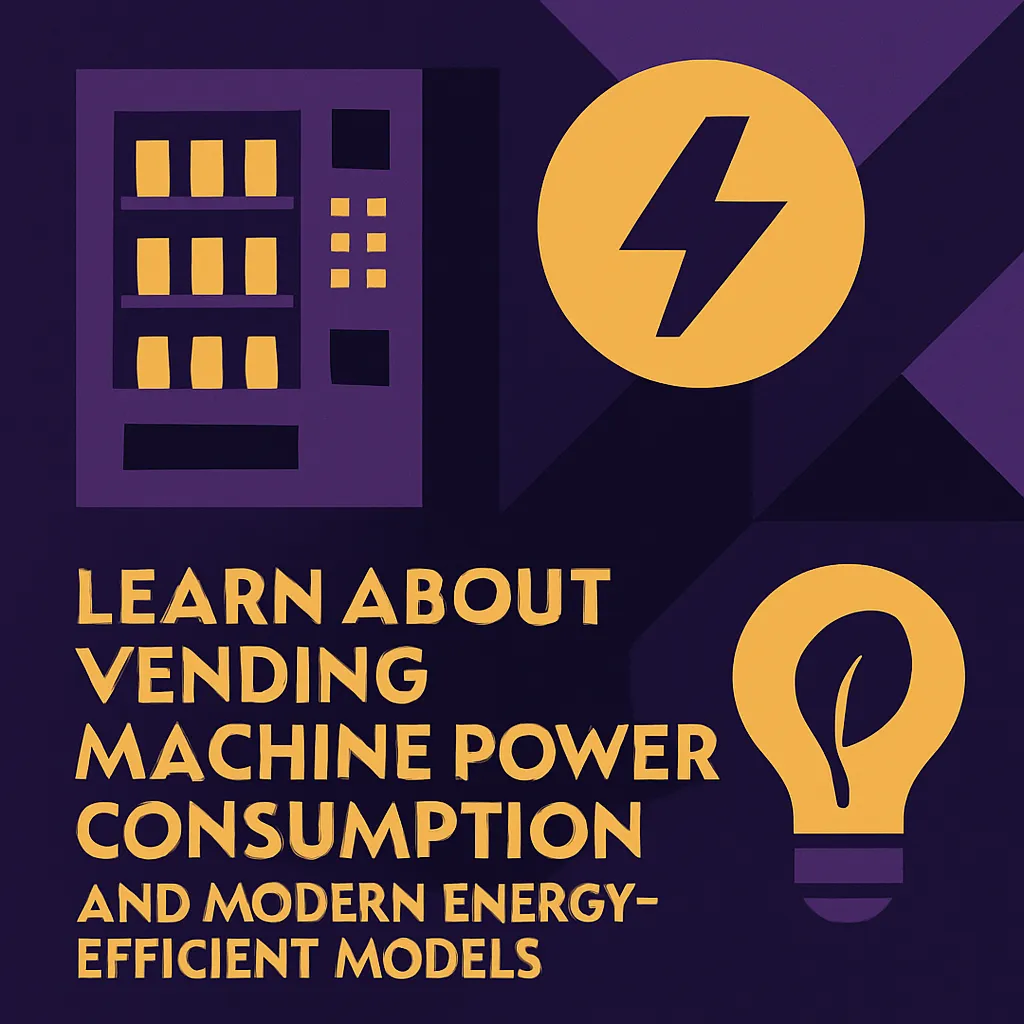How Much Electricity Does a Vending Machine Use?
Learn about vending machine power consumption and modern energy-efficient models.
Back to Vending FAQs ResourcesLearn about vending machine power consumption and modern energy-efficient models.
Back to Vending FAQs ResourcesVending machine electricity usage can vary significantly based on model, age, and features. Modern units are designed with energy efficiency in mind to help businesses save on operational costs.
![]() Newer machines consume less energy than older models
Newer machines consume less energy than older models
![]() Refrigeration is the primary driver of electricity use
Refrigeration is the primary driver of electricity use
![]() Energy-saving features can significantly lower operating costs
Energy-saving features can significantly lower operating costs

The electricity consumption of a vending machine is a significant consideration for any business. While individual machines vary, understanding the factors that influence power usage can help optimize costs and environmental impact. Modern vending technology has made substantial strides in energy efficiency, moving far beyond the older, power-hungry models of the past.
Typically, a standard refrigerated vending machine can consume anywhere from 2,500 to 4,000 kilowatt-hours (kWh) per year. This figure is heavily influenced by whether the machine maintains a chilled environment for beverages or fresh food, as the compressor for refrigeration accounts for the majority of power draw. Machines that only dispense non-refrigerated snacks or specialty items like coffee can have lower consumption. For businesses looking for precise data, information regarding a machine's electrical requirements is often found on a data plate or in the owner's manual. Additionally, you might wonder about other operational needs, and the topic of vending machine power and connectivity requirements provides additional context.
Newer machines often feature advanced insulation, LED lighting, and intelligent energy-saving modes that reduce power use during off-peak hours. Many models are now ENERGY STAR certified, indicating they meet strict energy efficiency guidelines set by the EPA and U.S. Department of Energy, which translates to lower utility bills and a smaller carbon footprint. When considering new equipment, inquiring about these certifications is crucial. The total cost of office vending services should always factor in energy consumption as an ongoing expense, not just the initial investment or product costs.
For locations considering a vending solution, it's vital to assess not just upfront costs but also long-term operating expenses. Energy-efficient machines contribute to the overall profitability and sustainability of a business operation. Reducing the energy footprint can be particularly important for larger facilities with multiple machines. Learning about vending services for warehouses, for instance, can showcase how large-scale operations deal with energy management across numerous units. Maintaining machines regularly, ensuring seals are tight, and cleaning condenser coils are simple actions that can further improve efficiency. For a broader perspective on operational expenses, exploring the cost to start a vending business can highlight various financial considerations.
A standard vending machine can consume between 2,500 to 4,000 kWh per year, depending on its age, type, and features like refrigeration or lighting.
Yes, newer vending machines are significantly more energy-efficient, often consuming 30% to 50% less electricity due to advanced insulation, LED lighting, and energy-saving modes.
Factors include compressor size (for refrigeration), lighting type, insulation quality, operating temperature, ambient room temperature, and usage patterns.
Refrigeration is the largest energy consumer in most vending machines, accounting for up to 80% of total electricity use, especially for chilled beverages and fresh food.
Yes, reducing energy costs is possible by upgrading to energy-efficient models, using timers for lighting, ensuring proper maintenance, and placing machines in cooler areas away from direct sunlight.
The wattage can vary widely, but most modern refrigerated vending machines typically draw between 600 to 1,200 watts when the compressor is running. Idle power is much lower.
For refrigerated products, continuous power is usually necessary. However, many modern machines have energy-saving modes that reduce power consumption during off-peak hours.
ENERGY STAR certified vending machines meet strict energy efficiency guidelines set by the EPA, consuming less energy and saving money on utility bills while reducing greenhouse gas emissions.
Yes, machines selling only non-refrigerated snacks use significantly less power than those selling chilled beverages, fresh food, or frozen items, which require constant cooling.
The monthly cost depends on electricity rates and machine consumption, but can range from $20 to $60 USD for a standard refrigerated machine, sometimes more for older models.